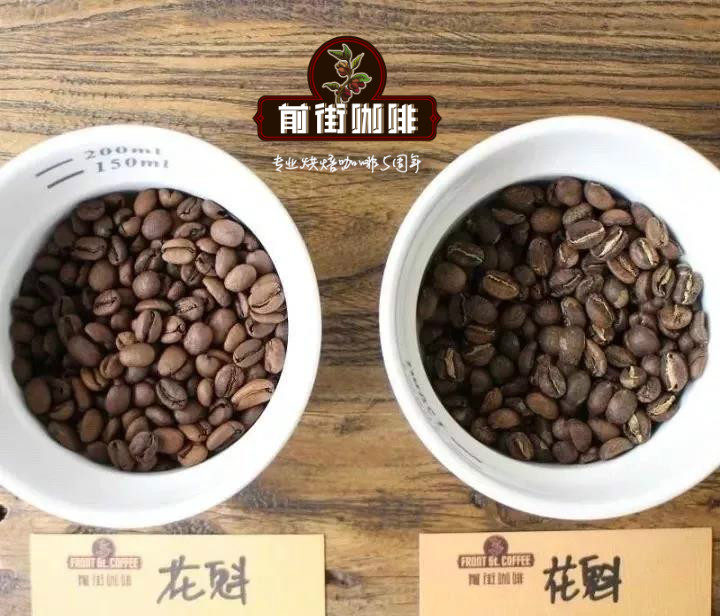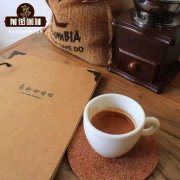Description of flavor and distribution of producing area of Ye Jia Xuefei Aduo

Professional coffee knowledge exchange more coffee bean information please follow the coffee workshop (Wechat official account cafe_style)
What are the characteristics of the Ethiopian Sunshine Yaga Sheffield G1 Aduoda Cooperative?
Country Ethiopia
Producing areas: Godeo, Cochere, Adorto
2000-2300 meters above sea level
Variety Ethiopian Guyou variety
The annual rainfall is about 1800-2000 mm
Treatment of sun exposure
Scored 93 points in coffee review in September 2017
Scored 95 points in coffee review in November 2017
Aduoda Cooperative is located in the Guido producing area (Gedeo Zone) on the southeastern plateau of Ethiopia, south of Addis Ababa, the capital of Ethiopia. The people of Guido (commonly known as Darasa) are considered to be a very different group in culture and language, bordering Sidama to the east, Alaba to the north, Burji to the west, and Guji to the south. These people belong to the East Cushitic language family, and traditionally take the upstream cliffs of the Sidamo northern rift graben as the main active area. Today, Guido is one of the most densely populated areas in Ethiopia, with residents mainly settled in the two larger towns of Bule and Dila, with Gedeo as the main ethnic group.
The Yega Coffee Coffee small Farmers Cooperative Union (YCFCU), which began in 2002, represents 24 junior cooperatives with more than 50, 000 farmers, of which the Aduoto Cooperative, with 1177 members, is part of it. Located in the verdant mountains, the coffee farms of the members are distributed between 2000 and 2400 meters above sea level. Coffee and enset (a banana-like crop, mountain banana) are traditionally cultivated in the Gedeo area, keeping the soil fertile and providing a good shade for coffee trees.
In 2006, the Adoduo Cooperative fell into a crisis of abolishment because it did not have any operational equipment to produce coffee. In 2007, a new ecological peel peeling machine (Eco depulper) was built for 25 small farmers to produce small amounts of coffee. The membership continued to grow over the next three years, and new equipment and infrastructure such as washing treatment stations, sun scaffolding and so on slowly increased. And through educating local farmers on sustainable development of farming methods and loans and farmers' financial assistance to establish a close relationship between cooperatives and farmers. This aid project has successfully made the Adoduo Cooperative a model for providing stable quality tanning and washing Ethiopian coffee.
Flavor introduction: the moment this bean opened the bag, it was as if a blueberry bomb exploded, bringing out tropical fruit flavors such as dried pineapple. This coffee has a strong aroma of blueberry and strawberry, with the smell of honey, ripe grape, peach, citrus and so on. With the change of temperature and the lower the temperature, the aroma of fermented blueberry wine becomes more and more obvious. Blueberry wine changes to strawberry wine with a slight brown sugar aroma.
Yirgacheffe itself is a small town, with three small producing areas Wenago, Kochere and Gelena Abaya nearby, and Kochere is also classified into Yejashafi because it produces coffee with almost the same flavor. Ethiopia implemented a new trading and grading system in November 2009, with the establishment of the Commodity Exchange (ECX), through which coffee and other agricultural products are auctioned publicly. In addition to Yegashifi, three new by-product areas, Wenago, Kochere and Genlena Abaya, have been added, which shows that the flavor of these three areas is so detailed that it can be subdivided. Since the implementation of the ECX system in 2008, most raw coffee beans have been sold by auction, but cooperatives are not under this jurisdiction, and they can directly contact buyers, negotiate prices and export.
The Adado Cooperative is one of the 26 alliances of the Yegashev Coffee Farmers' Cooperative Union (The Yirgacheffe Coffee FarmersCooperatives Union) (YCFCU). YCFCU, which now represents more than 50, 000 coffee farmers and representatives of more than 300000 families, was founded in June 2002. all 26 alliances are located in the Gedeo region of southern Ethiopia and is an important coffee producing area in Ethiopia.
Ethiopia in Africa is known as the Garden of Coffee Eden because it is the hometown of native coffee and a treasure trove of genes of coffee breeders. It has five boutique bean producing areas: Sidamo, Yirgacheffe, Harar, Limu and Gimbi. Among them, Yega Xuefei is located in the highest coffee producing area in Ethiopia, leaning on mountains and water. The coffee beans produced have their own unique flavor, which is called "Yejashafi flavor" by enthusiasts, which means strong aroma of jasmine, sweet tangerine, pleasant citric acid and sweet almonds.
The Adado cooperative comes from the Gedeo Zone producing area of Yegashefi. It is one of the founding cooperatives of the Yegashefi Coffee Farmers Cooperative Union (YCFCU) and an important base of the Fair Trade Association in Ethiopia. Adado is located in the high-altitude lush mountains of 2000 to 2400 meters, where 1250 farmers work together. The traditional farming method of interplanting the original coffee and mountain banana (enset) makes the mountain banana bring shade to the coffee tree, enrich all the soil and add the unique flavor of the coffee. This batch of washed Yega Chuefei Adado (Adado) treatment plant G1 is the highest grade assessed by ECX as G1.
Important Notice :
前街咖啡 FrontStreet Coffee has moved to new addredd:
FrontStreet Coffee Address: 315,Donghua East Road,GuangZhou
Tel:020 38364473
- Prev

Evaluation of Katim Flavor of Yunnan Coffee
Professional coffee knowledge exchange more coffee bean information please pay attention to the coffee workshop (Wechat official account cafe_style) Coffee tree is a shrub, botanically it belongs to the Rubiaceae family (Rubiaceae) of the genus Coffea, with more than 6000 species belonging to more than 500 genera. Although 25 to 100 of them have been questioned whether they should be included in the Coffea. Most of the raw beans with economic value belong to C. arabic
- Next

Flavor and characteristics of Yelsa Farm Yellow Honey treatment in Yelsalo Manor, Costa Rica?
Professional coffee knowledge exchange more coffee bean information please pay attention to the coffee workshop (Wechat official account cafe_style) Costa Rica Yesaro estate Yelsa processing farm yellow honey processing flavor and characteristics? What is the principle of yellow honey? Costa Rica's famous Yelsa treatment plant (Helsar de Zarcero), established in 2004, has repeatedly won the extraordinary Cup (cup)
Related
- Detailed explanation of Jadeite planting Land in Panamanian Jadeite Manor introduction to the grading system of Jadeite competitive bidding, Red bid, Green bid and Rose Summer
- Story of Coffee planting in Brenka region of Costa Rica Stonehenge Manor anaerobic heavy honey treatment of flavor mouth
- What's on the barrel of Blue Mountain Coffee beans?
- Can American coffee also pull flowers? How to use hot American style to pull out a good-looking pattern?
- Can you make a cold extract with coffee beans? What is the right proportion for cold-extracted coffee formula?
- Indonesian PWN Gold Mandrine Coffee Origin Features Flavor How to Chong? Mandolin coffee is American.
- A brief introduction to the flavor characteristics of Brazilian yellow bourbon coffee beans
- What is the effect of different water quality on the flavor of cold-extracted coffee? What kind of water is best for brewing coffee?
- Why do you think of Rose Summer whenever you mention Panamanian coffee?
- Introduction to the characteristics of authentic blue mountain coffee bean producing areas? What is the CIB Coffee Authority in Jamaica?

